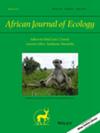The New Fishing Technique With Lighted Gillnets in Lake Kivu: Panacea or Pandora's Box?
Abstract
A new fishing technique has been introduced in Lake Kivu, across the Congo side. It consists of gillnets on which light-emitting diode (LED) lamps are attached. Traditional fishermen have introduced the fishing technique without any studies related to the positive and drawback effects of this fishing technique. We sought to understand whether the gillnets with LED lamps fishing technique improve fishing catches and can be regarded as sustainable for the Lake Kivu ecosystem, or is it just only a marketing strategy for gillnets and LED lamp sellers. Two complementary approaches have been used in this study. Experimental fishing campaigns were conducted from June 2021 to June 2022 and monitoring of fishing team in the field coupled with surveys of fishermen about the effectiveness use of this new fishing technique. We observed that (i) 88% of fishermen using gillnet in the Bukavu sub-basin have already adopted the recently introduced fishing technique; (ii) the average catch per unit effort of gillnets with LED lamps is higher than those without LED lamps (3.84 ± 1.95 kg/net vs. 2.69 ± 2.04 kg/net); (iii) these gillnets retrieve larger specimens (79.88 mm vs. 76.69 mm) and generate monthly a higher average profit to fishermen ($916.35) than the fishing technique lacking the LED ($807). However, (iv) the gillnets with LED lamps generates a lot of plastic trash: around 2130 kg of plastic bags/month under fishing conditions in the Bukavu sub-basin. So, this new fishing technique is a real panacea for its practitioners, but a veritable Pandora's box generating plastic pollutants in Lake Kivu. Instead of banning this new fishing technique, we need to adapt it by using submersible LED lamps.

 求助内容:
求助内容: 应助结果提醒方式:
应助结果提醒方式:


